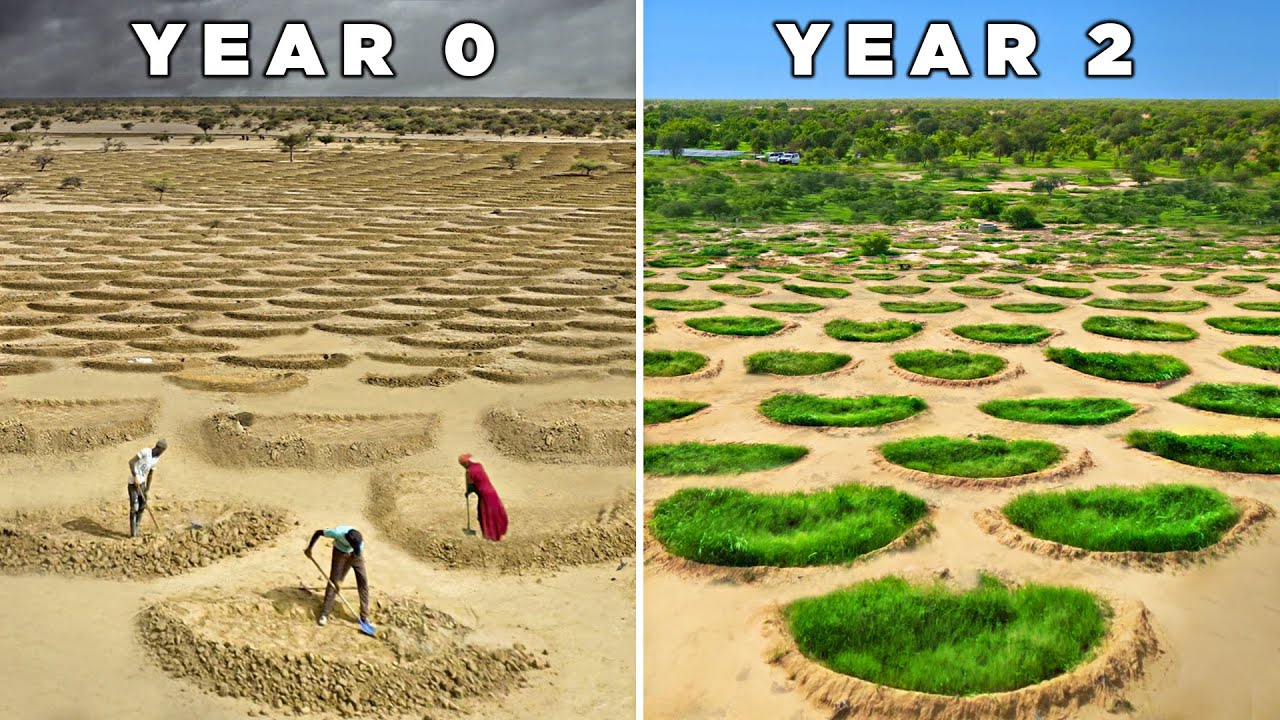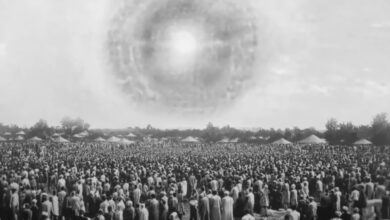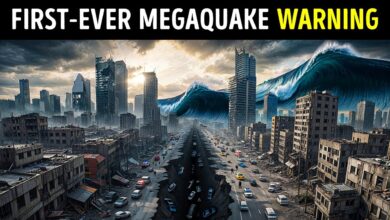How the UN is Holding Back the Sahara Desert

Two years ago, a desolate area in the Sahel region of North Africa that had not grown anything for 40 years was transformed by the United Nations’ Great Green Wall initiative. The project not only aims to restore the environment but also help stop the spread of the Sahara Desert southward, providing livelihoods and livelihoods to communities living in an area that is already suffering from desertification. The area is located on the natural border between the Sahel and the Sahara, part of the Senegal River – which was chosen as a barrier against the Sahara’s encroachment.
To revive the land, the World Food Programme (WFP) and local communities have deployed traditional methods such as the crescent technique, a system of digging semicircular holes along the contours of the terrain to retain rainwater in arid lands. Each crescent is 4 metres in diameter and is designed to collect and retain water on site, helping to maintain soil moisture and create conditions for crop growth. Local communities, numbering around 150 people, have dug thousands of crescents to transform hard soil into a growing environment.
In these crescents, people grow crops such as sorghum and millet, native varieties that are drought-tolerant and have high nutritional value, suitable for the harsh climate of the Sahel. In addition, fruit trees such as guava, citrus and forest trees are planted in between to create a sustainable ecological cover. These trees help improve the soil and replenish nutrients in the ecosystem, while enhancing the long-term livelihoods of the people.

In addition, the project also builds agricultural systems combined with forest farming, where vegetable gardens such as tomatoes and okra are intercropped in specialized beds, providing a diverse and stable food supply all year round. Plants such as moringa and pigeon pea are selected to be planted in deep trenches to create biomass as they grow, contributing to the creation of fertile soil and retaining water in the soil, reducing groundwater loss.
The half-moon technique is not a new technology, but an ancient farming method that was once common in the Sahel region but had been forgotten. WFP has revived this method to preserve and restore the ecosystem. In addition, about 10-15% of the rainwater collected from these half-moon pits will percolate into the soil, replenishing the groundwater and improving the water balance for future generations.
An important social aspect of the project is to prevent the migration of young people in the village. In the past, after the rainy season, many young people had to leave their villages to find work in big cities or even migrate abroad, leaving behind their agricultural activities in their hometowns.
The project provides year-round employment from vegetable and fruit production, helping people stay in their hometowns, maintain social solidarity, and contribute to community development. These young people can now participate in protecting and improving the land, contributing to the sustainable development of their hometowns.
WFP has also cleverly chosen to locate the project in a severely degraded area, demonstrating that even areas that seem beyond recovery can become a sustainable source of food and bring new hope. This land is part of the Green Wall, a vast ecological defense line to prevent the encroachment of the Sahara.
This is the “front line” of the Great Green Wall in the Senegal River region, helping to maintain the natural boundary between the Sahara and the Sahel. Through these efforts, the project has created a shield to protect the Sahel region from desert encroachment, bringing hope for a sustainable future for communities living on the fringes of the Sahara desert.








